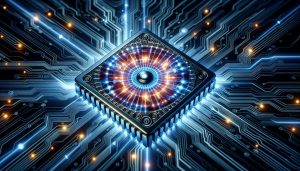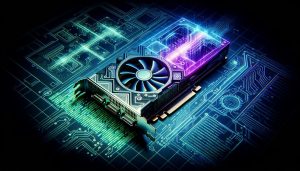The Grok AI, Elon Musk's latest venture, is reshaping the artificial intelligence industry. It's unleashing new potentials with innovations like LLM fine-tuning for Large Language Models. They're also revolutionizing hardware with Nvidia Blackwell for faster AI computing. They even introduced Devin, an AI software engineer that can write and fix codes autonomously. Want an all-encompassing view of 2024's best data labeling tools? They've evaluated it! Plus, they're setting new standards with the Mixtral 8x7B model. So much to unpack, imagine what you'll know once you explore further.
Table of Contents
Understanding LLM Fine-Tuning
Entering the realm of LLM fine-tuning, it's crucial to understand that this process is critical to maximizing Large Language Models like GPT-3, enabling them to carry out specific tasks with exceptional efficiency. Now, envision two primary types of LLM fine-tuning: supervised fine-tuning with labeled data, and few-shot fine-tuning with minimal data. It's like training a dog; the more precise and consistent the instructions, the better the performance.
Approaches for LLM fine-tuning aren't as intimidating as they may seem. They encompass task-specific fine-tuning, multitask learning, prompt engineering, and data augmentation. Consider these as the instruments in your AI toolbox, each with a distinct role in shaping the LLM, much like a sculptor carving a stone into a masterpiece.
The key to optimizing LLM performance lies in the specifics. Choosing the right dataset is like selecting the perfect canvas for a painter. Fine-tuning hyperparameters, similar to tuning a musical instrument, guarantees excellent performance. And using evaluation metrics tailored to the task? That acts as your guide, leading you towards your desired outcome.
A detailed journey into LLM fine-tuning encompasses aspects such as pre-training, fine-tuning tasks, prompt design, and domain adaptation techniques. It's like embarking on an adventure, where each step brings you closer to the destination: a finely-tuned, efficient AI.
The Role of Nvidia Blackwell in AI
As we explore the pioneering role of Nvidia Blackwell in AI, it's evident that this project is a catalyst, propelling us towards the arrival of the world's most crucial AI supercomputer, primed to surpass all existing AI models' performance. This endeavor promises not only faster computing capabilities, but also a revolution in AI technology. Nvidia Blackwell's work points to a future where AI systems are more complex, efficient, and capable than ever before.
The superchips and GPUs being developed are more than just hardware upgrades. They're the foundation of a new era in AI, one where machine learning and deep learning can be leveraged to an unprecedented degree. This means that AI applications across various industries will be enhanced, leading to groundbreaking advancements.
The implications of Nvidia Blackwell's innovations are profound, pushing the boundaries of what AI can do. We're looking at a future where AI systems aren't just smarter, but also more versatile. They'll be able to tackle complex real-world problems, transforming our lives in ways we can't even imagine yet.
For those of us seeking liberation from the limitations of current AI technology, Nvidia Blackwell represents a beacon of hope. It symbolizes the promise of a future where AI is more than just a tool – it's a powerful ally that can help us solve some of the world's most pressing problems. This is the true potential of Nvidia Blackwell, and it's why its role in AI is so crucial. This isn't a potential we can afford to ignore.
Introduction of Devin: AI Software Engineer
Building on the advancements made by Nvidia Blackwell, OpenAI has taken a significant leap forward with their creation of Devin, the world's first AI software engineer that can autonomously write and fix code. This groundbreaking innovation marks a paradigm shift in the domain of software development, offering a future brimming with possibilities.
Devin isn't just a novelty; it's a potential game-changer. It's not just about writing and debugging code; it's also about automating and accelerating software development processes. Devin's capabilities extend beyond just coding, handling tasks traditionally shouldered by human software engineers.
Imagine a world where repetitive coding tasks are automated, where software maintenance is streamlined, and where bug fixes are immediate. That's the world Devin makes possible.
Yet, with every breakthrough comes new questions. Devin's emergence raises a myriad of issues regarding the future role of AI in coding, its impact on the tech industry, and the potential for further AI advancements in software engineering.
To help illustrate Devin's potential and the questions it raises, here's a brief table:
| Devin's Capabilities | Key Questions Raised |
|---|---|
| Autonomous coding | What is the future role of AI in coding? |
| Software maintenance | How will this impact the tech industry? |
| Bug fixes | What are the possibilities for further AI advancements? |
Reviewing 2024s Data Labeling Tools
Delving into the landscape of AI development tools in 2024, it's clear that data labeling tools have played a pivotal role in shaping the accuracy and efficiency of machine learning models. Their importance can't be overstated, as they're the backbone of successful AI development, ensuring high-quality data for model training.
A review of 2024's top 30 data labeling tools by G2 highlighted the cream of the crop. These tools haven't only streamlined the data preparation process for machine learning tasks, but also revolutionized how AI algorithms achieve accuracy and efficiency. The potential of these tools is immeasurable, and their impact on AI development is significant.
But why are these tools so groundbreaking? It's simple. They embody the relentless evolution of AI technology, underpinning its growing reliance on accurately labeled datasets. Their advancement is a signpost on the road to liberation from tedious manual tasks.
The beauty of these tools lies in their ability to transform raw data into valuable, actionable insights, making them an essential element in taking AI development to new heights. Their role in enhancing the intelligence of AI algorithms is indispensable, making them a game-changer in the sphere of machine learning.
Unveiling Mistral AIs Mixtral 8x7B Model
Shifting focus, let's explore Mistral AI's latest contribution to the artificial intelligence landscape: the groundbreaking Mixtral 8x7B model. This revolutionary model is setting new standards in AI, offering a fresh perspective on how we can harness the power of technology for our emancipation.
With its innovative design, the Mixtral 8x7B model promises faster computing capabilities, enhancing the efficiency and performance of AI applications. Its advanced features are crafted to propel AI advancements across various industries, offering remarkable potential for transformation. It isn't just about speed; it's about accelerating the pace of progress in AI technology.
Securing a substantial €400M in funding, Mistral AI has demonstrated its dedication to advancing the AI landscape. This significant investment underpins the company's belief in the Mixtral 8x7B model and its potential to redefine the AI landscape. It's a significant vote of confidence that should pique our interest and fuel our optimism about the future of AI.
In essence, the Mixtral 8x7B model isn't just a technological advancement; it's a symbol of liberation. It represents an opportunity for us to leverage technology to reveal new possibilities and realize our full potential. It's about breaking free from the constraints of conventional AI models and embracing a future where AI is more efficient, more effective, and more capable of driving progress.
Frequently Asked Questions
How Is Grok Different From Chatgpt?
Grok's different from ChatGPT in many ways. It's designed for AI research and development, boasting a larger model size and complexity. It's ideal for advanced AI projects, with enhanced fine-tuning and customization capabilities.
Grok gives you better control over model training and tuning parameters, letting you tailor it to your specific needs. It's focus on AI research sets it apart from ChatGPT, offering specialized tools for advanced AI projects.
How Do You Use Grok Ai?
I use Grok AI to streamline my data labeling process. It's easy to use, and it saves me time and resources. I can customize my workflow, collaborate with my team, and use different tools like bounding boxes, polygons, and semantic segmentation.
Grok AI supports various data types, which gives me flexibility in my annotation tasks. It's a powerful platform that's revolutionized the way I manage my AI model training.
What Is the Personality of Grok Ai?
Grok AI's personality is pretty phenomenal. It's been designed to be warm, engaging, even humorous. You're not just interacting with a machine, you're connecting with a persona that's human-like.
Grok AI's approachable, friendly vibe enhances the user experience, making the interaction feel more natural. It's not just about functionality. Its unique personality sets it apart, making it a more interactive, personable AI assistant.
Trust me, it makes all the difference.
Conclusion
To sum up, Grok AI and Mistral AI's Mixtral 8x7B model, combined with Nvidia Blackwell's capabilities, are revolutionizing AI.
With Devin's software engineering prowess and the advanced data labelling tools of 2024, we're witnessing an exciting AI evolution.
It's clear that Elon Musk's commitment to LLM Fine-Tuning is paying off, pushing the boundaries of what's possible in AI.
This is a thrilling journey, one that promises a future where AI greatly enhances our lives.




